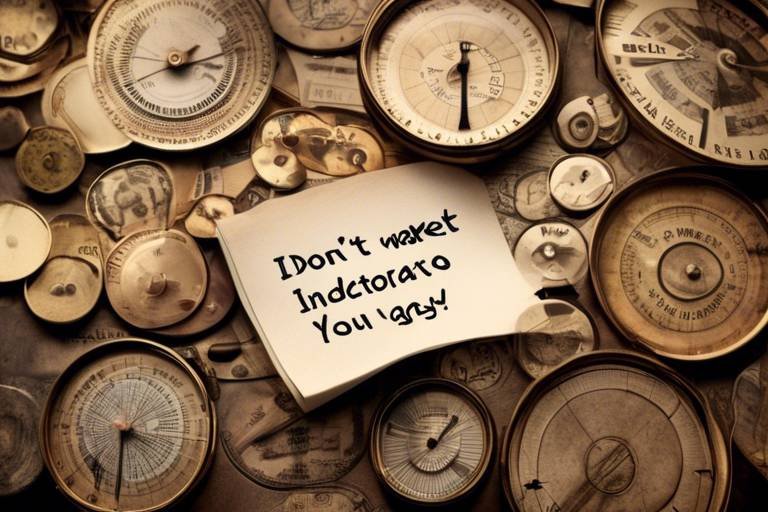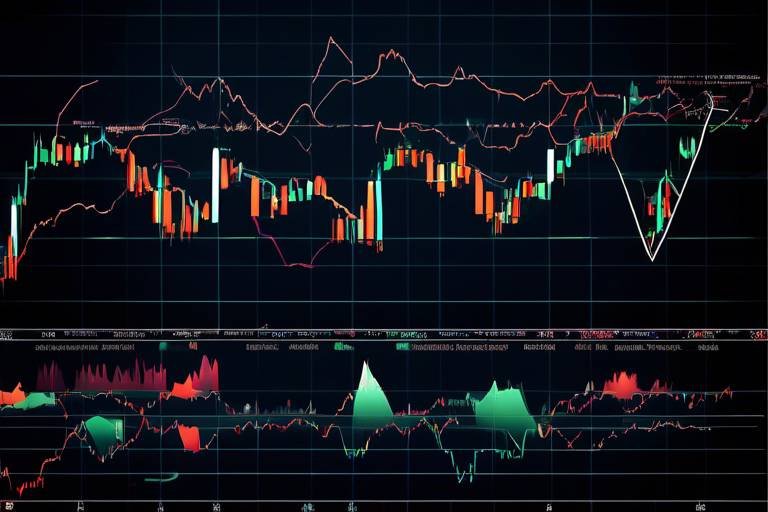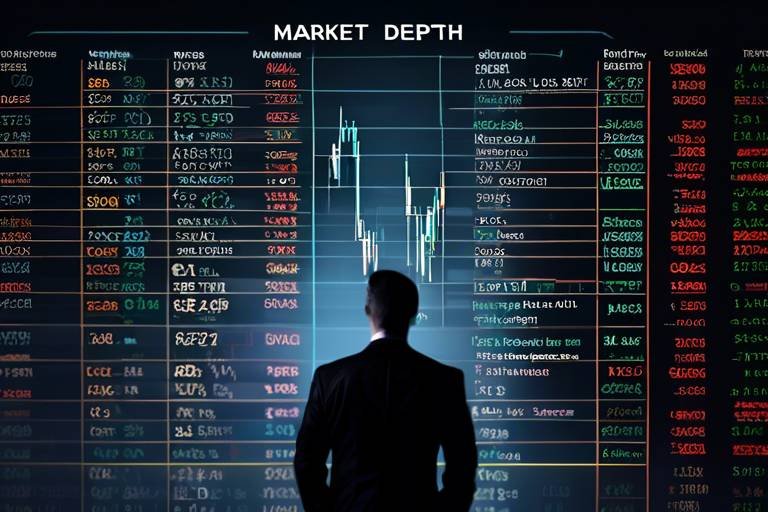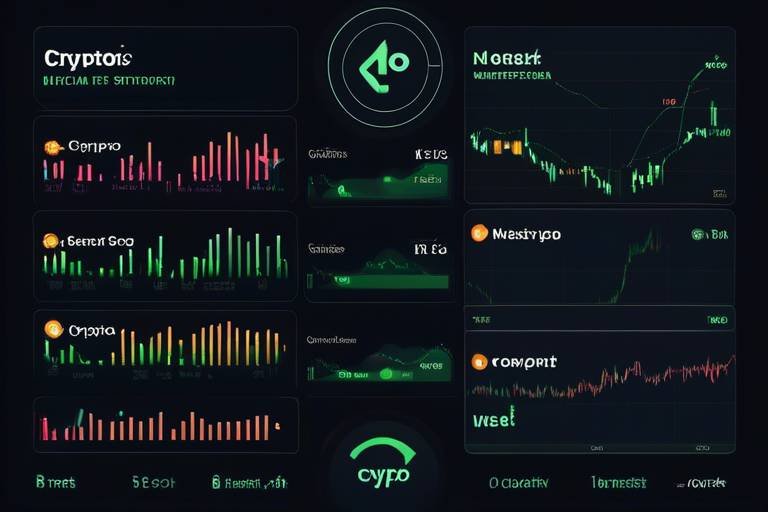Using Stochastic Oscillator for Bitcoin Trading Decisions
In the fast-paced world of Bitcoin trading, making informed decisions can feel like navigating a maze. With prices swinging wildly and trends changing in the blink of an eye, traders need reliable tools to guide their strategies. One such tool is the Stochastic Oscillator, a powerful momentum indicator that can help you pinpoint the right moments to buy or sell. But how does it work, and how can you effectively apply it to your trading decisions? In this article, we’ll dive into the intricacies of the Stochastic Oscillator, breaking down its components, calculation methods, and practical applications in the volatile Bitcoin market.
The Stochastic Oscillator is more than just a fancy term; it’s a momentum indicator that compares a specific closing price of Bitcoin to its price range over a certain period. Think of it as a compass that helps you identify potential entry and exit points in the market. By analyzing the relationship between the closing price and the high-low range of prices, traders can gauge whether Bitcoin is overbought or oversold, which is crucial for making strategic trading decisions.
Calculating the Stochastic Oscillator is simpler than you might think. The formula involves just a few steps:
%K (Current Close - Lowest Low) / (Highest High - Lowest Low) * 100 %D 3-day SMA of %K
In this formula, the Lowest Low and Highest High are determined over a specified period, typically 14 days. By plugging in the current closing price, traders can derive a numerical value that provides insight into market momentum. This numerical value ranges from 0 to 100, where values above 80 indicate overbought conditions and values below 20 signify oversold conditions.
The Stochastic Oscillator comprises two main lines: %K and %D. The %K line represents the current closing price relative to the price range, while the %D line is a smoothed average of %K. These lines work together to create signals that can guide your trading decisions. When %K crosses above %D, it can indicate a potential buying opportunity, whereas a crossover below %D may suggest a selling signal. Understanding these components is crucial for interpreting market movements effectively.
Interpreting the %K and %D lines can be likened to reading a map. If you know where you are and where you want to go, you can make informed decisions about your route. Crossovers between these lines can serve as vital indicators for traders. For instance:
- If %K crosses above %D, it may signal a buying opportunity.
- If %K crosses below %D, it could indicate a selling opportunity.
By closely monitoring these movements, traders can enhance their decision-making process in the Bitcoin market.
Choosing the right time frame for the Stochastic Oscillator is akin to selecting the right lens for a camera. A shorter time frame may capture rapid price movements, while a longer one can provide a broader market perspective. Typically, traders use a 14-day period, but adjusting this based on your trading style—whether day trading or swing trading—can significantly impact the signals you receive. Experimenting with different time frames will help you find what works best for your trading strategy.
Traders often employ various strategies using the Stochastic Oscillator to make informed decisions. Some popular methods include:
- Overbought/Oversold Conditions: Use the oscillator to identify extreme market conditions.
- Divergence: Look for discrepancies between the price action and the oscillator to spot potential reversals.
By leveraging these strategies, traders can gain a competitive edge in the unpredictable Bitcoin market.
While the Stochastic Oscillator is a valuable tool, it’s essential to recognize its limitations. For instance, during strong trends, the oscillator may produce false signals, leading traders to make premature decisions. Therefore, it’s crucial to use the Stochastic Oscillator in conjunction with other indicators for confirmation. This approach can enhance your trading accuracy and reduce the risk of losses.
To maximize the effectiveness of the Stochastic Oscillator, consider combining it with other technical indicators, such as moving averages or the Relative Strength Index (RSI). This combination can provide a more comprehensive view of market trends and improve your trading decisions. For example, using moving averages can help you identify the overall trend, while the Stochastic Oscillator can pinpoint optimal entry and exit points.
Effective risk management is the backbone of successful Bitcoin trading. No matter how reliable your indicators are, it’s vital to protect your capital. Implementing strategies like setting stop-loss orders, diversifying your portfolio, and only risking a small percentage of your capital on each trade can safeguard your investments. Remember, trading is not just about making profits; it’s about preserving your capital for the long haul.
What is the best time frame for using the Stochastic Oscillator?
The best time frame depends on your trading style. Day traders may prefer shorter time frames, while swing traders might benefit from longer periods.
Can the Stochastic Oscillator be used alone?
While it can be used independently, combining it with other indicators can enhance accuracy and provide better insights.
What are the risks of relying solely on the Stochastic Oscillator?
Relying solely on the Stochastic Oscillator can lead to false signals, especially during strong trends. It's crucial to confirm signals with additional indicators.

Understanding the Stochastic Oscillator
The Stochastic Oscillator is a popular momentum indicator that traders use to gauge the strength of price movements in the financial markets. At its core, this tool compares a specific closing price of an asset, such as Bitcoin, to a range of its prices over a given time frame. This comparison allows traders to identify potential entry and exit points, making it a crucial component of technical analysis.
Imagine you’re trying to catch a wave while surfing; you need to understand the ocean's behavior before you paddle out. Similarly, the Stochastic Oscillator helps traders understand market momentum and price trends by providing a numerical value that reflects the asset's current position relative to its historical price range. This insight can be invaluable, especially in the notoriously volatile world of Bitcoin trading.
To break it down further, the Stochastic Oscillator operates on the premise that prices tend to close near their highs during upward trends and near their lows during downward trends. This characteristic makes the indicator particularly effective in identifying potential reversal points. The oscillator typically ranges from 0 to 100, where readings above 80 indicate that an asset may be overbought, while readings below 20 suggest it may be oversold. Understanding these thresholds is essential for traders looking to make informed decisions.
In practice, traders often look for specific patterns and signals generated by the Stochastic Oscillator. For example, when the %K line crosses above the %D line, it may signal a buying opportunity. Conversely, a crossover in the opposite direction could indicate a potential sell signal. This interplay between the two lines is a fundamental aspect of using the Stochastic Oscillator effectively in trading strategies.
Moreover, it’s important to remember that the Stochastic Oscillator is not infallible. Like any tool, it has its strengths and weaknesses. Traders should use it in conjunction with other indicators and analysis methods to confirm signals and enhance their trading strategies. By understanding the nuances of the Stochastic Oscillator, traders can better navigate the complexities of the Bitcoin market and make more informed decisions.

How to Calculate the Stochastic Oscillator
Calculating the Stochastic Oscillator might sound complex at first, but it’s actually quite straightforward once you break it down into manageable steps. Essentially, this powerful tool helps you gauge the momentum of Bitcoin by comparing its closing price to its price range over a specific period. The formula for the Stochastic Oscillator is:
%K (Current Close - Lowest Low) / (Highest High - Lowest Low) * 100
In this formula:
- Current Close refers to the closing price of Bitcoin at the current time.
- Lowest Low is the lowest price of Bitcoin over a defined period (typically 14 days).
- Highest High is the highest price of Bitcoin over the same period.
To illustrate this, let’s say you’re analyzing Bitcoin over the last 14 days. If the Current Close is $50,000, the Lowest Low during that period is $45,000, and the Highest High is $55,000, you would plug those numbers into the formula:
%K ($50,000 - $45,000) / ($55,000 - $45,000) * 100 %K $5,000 / $10,000 * 100 %K 50
This means that the Stochastic Oscillator value (%K) is 50, indicating that the current closing price is right in the middle of the range for the last 14 days. But wait, there’s more! To enhance your analysis, you also calculate the %D line, which is a moving average of the %K values. This typically uses a 3-day simple moving average, smoothing out the fluctuations and providing clearer signals.
To calculate the %D line, you would take the last three %K values and average them. For example, if your last three %K values were 50, 60, and 70, your %D would be:
%D (50 + 60 + 70) / 3 %D 180 / 3 %D 60
With both %K and %D calculated, you are now equipped to analyze Bitcoin's momentum more effectively. Keep in mind, however, that while these calculations provide valuable insights, it’s essential to consider other factors and indicators to make well-rounded trading decisions.
When calculating the Stochastic Oscillator, the choice of time frame can significantly influence your results. Here are some common time frames traders use:
- Short-term (5-10 days): Ideal for day traders looking for quick entries and exits.
- Medium-term (14 days): A balanced approach for swing traders.
- Long-term (30 days or more): Suitable for investors focusing on long-term trends.
Remember, the time frame you choose should align with your trading strategy and risk tolerance. The Stochastic Oscillator can provide different signals depending on the time frame, so it’s crucial to experiment and find what works best for you.

Components of the Stochastic Oscillator
The Stochastic Oscillator is a fascinating tool in the realm of technical analysis, and understanding its components is key to leveraging its full potential in Bitcoin trading. At its core, the Stochastic Oscillator consists of two primary lines: %K and %D. These lines work together to provide traders with insights into market momentum and potential trading signals.
The %K line is the faster line and represents the current closing price of Bitcoin relative to its price range over a specified period. This line is calculated using the formula:
%K (Current Close - Lowest Low) / (Highest High - Lowest Low) * 100
Where:
- Current Close: The most recent closing price of Bitcoin.
- Lowest Low: The lowest price of Bitcoin over the specified period.
- Highest High: The highest price of Bitcoin over the specified period.
On the other hand, the %D line is a smoothed version of the %K line, typically calculated as a moving average of %K over a set number of periods. This smoothing helps to filter out some of the noise from the market, making it easier for traders to identify trends and potential reversal points. The formula for %D can be expressed as:
%D Moving Average of %K
By analyzing these two lines together, traders can spot important signals. For instance, when the %K line crosses above the %D line, it might indicate a potential buy signal, while a crossover in the opposite direction could suggest a sell signal. Understanding these components and their interactions is crucial for making informed trading decisions.
Furthermore, traders often look for the Stochastic Oscillator to reach extreme levels, typically above 80 (indicating overbought conditions) or below 20 (indicating oversold conditions). These levels can serve as additional confirmation for potential entry or exit points in the Bitcoin market.
In summary, the components of the Stochastic Oscillator—%K and %D—are essential for traders looking to navigate the complexities of Bitcoin trading. By mastering these elements, traders can gain a better understanding of market momentum and enhance their decision-making process.
- What is the Stochastic Oscillator used for? The Stochastic Oscillator is primarily used to identify overbought or oversold conditions in the market, helping traders make informed decisions about entry and exit points.
- How do I interpret the %K and %D lines? A crossover of the %K line above the %D line can indicate a buy signal, while a crossover below may suggest a sell signal.
- What time frame should I use for the Stochastic Oscillator? The optimal time frame can vary based on your trading strategy. Shorter time frames may provide more signals, while longer time frames can offer a clearer trend direction.
- Can the Stochastic Oscillator be used alone? While it can provide valuable insights, it's often best to use the Stochastic Oscillator in conjunction with other indicators for more reliable trading decisions.

Interpreting %K and %D Lines
When diving into the world of Bitcoin trading, understanding the %K and %D lines of the Stochastic Oscillator is crucial for making informed decisions. Think of these lines as your navigational tools in a vast ocean of market data. The %K line, which is the faster of the two, represents the current closing price of Bitcoin relative to its price range over a specific period. This line is often seen as a signal of momentum; when it rises, it suggests that buyers are gaining strength, whereas a drop indicates sellers might be taking control.
On the other hand, the %D line is a smoothed version of the %K line, acting as a lagging indicator that helps confirm trends. It can be likened to a wise old sailor who offers insights based on experience, smoothing out the choppy waters of market volatility. The interaction between these two lines can produce valuable signals. For instance, when the %K line crosses above the %D line, it can indicate a potential buy signal. Conversely, when the %K line crosses below the %D line, it often suggests a sell signal.
It's essential to note that these crossovers should not be viewed in isolation. Instead, they should be used in conjunction with other indicators and market analysis to confirm trading decisions. For example, if you see a crossover occurring during a strong uptrend, it might be a good opportunity to buy. However, if it happens during a downtrend, it could be a false signal. Therefore, traders should always be cautious and consider the broader market context.
To further illustrate this, let's take a look at a simple table that summarizes the signals generated by the %K and %D lines:
| Signal | %K Line Position | %D Line Position | Interpretation |
|---|---|---|---|
| Buy Signal | Crosses above %D | Below %K | Potential upward momentum |
| Sell Signal | Crosses below %D | Above %K | Potential downward momentum |
| No Action | Both lines moving sideways | Indecisive market | Wait for clearer signals |
In summary, interpreting the %K and %D lines is akin to reading the winds and currents before setting sail. By understanding these indicators and their interactions, traders can navigate the turbulent waters of Bitcoin trading more effectively. Always remember, though, that no indicator is foolproof. The key to successful trading lies in combining insights from multiple sources and maintaining a keen awareness of market conditions.
- What is the best time frame to use with the Stochastic Oscillator?
It depends on your trading strategy. Day traders might prefer shorter time frames like 5 or 15 minutes, while swing traders often use hourly or daily charts. - Can the Stochastic Oscillator be used for other cryptocurrencies?
Absolutely! While this article focuses on Bitcoin, the Stochastic Oscillator can be applied to any asset that has price movements. - How do I avoid false signals when using the Stochastic Oscillator?
Combining the Stochastic Oscillator with other indicators like moving averages or RSI can help filter out false signals and improve your trading accuracy.

Setting the Time Frame
When it comes to trading Bitcoin using the Stochastic Oscillator, setting the right time frame is absolutely crucial. Think of it like choosing the right lens for a camera; the time frame you select can dramatically change the picture you see of the market. Are you looking for quick day trades, or are you more interested in long-term investments? Each approach requires a different perspective, and the time frame you choose will influence the signals you receive from the Stochastic Oscillator.
Generally, traders can choose from a variety of time frames, including 1-minute, 5-minute, 15-minute, 1-hour, and even daily or weekly charts. Each of these options caters to different trading strategies:
| Time Frame | Best For | Characteristics |
|---|---|---|
| 1-Minute | Scalping | Fast-paced trades, high frequency |
| 5-Minute | Day Trading | Short-term trades, quick decisions |
| 1-Hour | Swing Trading | Moderate pace, more analysis |
| Daily | Position Trading | Long-term outlook, less frequent trades |
For instance, if you’re a scalper, using a 1-minute or 5-minute chart might be ideal for you. Here, the Stochastic Oscillator can help identify quick overbought or oversold conditions, allowing you to make rapid trades. On the other hand, if you’re a position trader, a daily or weekly chart might be more appropriate. This longer time frame allows for a more comprehensive view of the market trends, reducing the noise that often accompanies shorter time frames.
However, it’s important to remember that the choice of time frame also comes with its own set of challenges. Shorter time frames can lead to more noise in the signals, which may result in false positives. Conversely, longer time frames may miss out on quick market movements. Therefore, it’s essential to find a balance that aligns with your trading style and risk tolerance.
Ultimately, the key takeaway is to experiment with different time frames to find what works best for you. Use the Stochastic Oscillator as a tool to gauge momentum, but always consider the broader market context and your personal trading goals. And remember, the market is dynamic; what works today might not work tomorrow. Stay adaptable!

Common Trading Strategies with the Stochastic Oscillator
The Stochastic Oscillator isn’t just a fancy tool; it’s a game-changer for traders looking to navigate the choppy waters of the Bitcoin market. One of the most popular strategies involves identifying overbought and oversold conditions. When the %K line crosses above the 80 mark, it often indicates that Bitcoin is overbought, suggesting a potential price reversal. Conversely, when it dips below 20, it signals an oversold condition, hinting that a price increase might be on the horizon. This can be likened to a rubber band; when stretched too far in one direction, it eventually snaps back. Understanding these levels can help traders make timely decisions.
Another effective strategy is to look for divergences between the Stochastic Oscillator and Bitcoin's price action. For instance, if Bitcoin's price is making new highs while the Stochastic Oscillator fails to do so, it could signal a weakening momentum, indicating a potential reversal. This divergence acts like a warning light on your dashboard; it’s a cue that something might be off. Traders often combine these signals with other indicators to confirm their decisions, enhancing the reliability of their trades.
Moreover, traders can employ a crossover strategy using the %K and %D lines. When the %K line crosses above the %D line, it may be interpreted as a bullish signal, suggesting a buy opportunity. Conversely, a crossover in the opposite direction could signal a sell opportunity. This strategy is akin to following a trail of breadcrumbs; each crossover provides a hint about the market's next move. By keeping an eye on these crossovers, traders can better position themselves to capitalize on Bitcoin's price movements.
It’s important to remember that no strategy is foolproof. The Stochastic Oscillator should not be used in isolation. Instead, consider combining it with other technical indicators, such as moving averages or the Relative Strength Index (RSI), to create a more robust trading plan. This multi-faceted approach can help mitigate risks and enhance the overall effectiveness of your trading strategy. Think of it like assembling a team; each player brings unique strengths that can lead to a winning outcome.
In summary, the Stochastic Oscillator provides several trading strategies that can help traders make informed decisions in the volatile Bitcoin market. By understanding overbought and oversold conditions, identifying divergences, and utilizing crossover strategies, traders can navigate the complexities of Bitcoin trading more effectively. However, always remember to incorporate proper risk management techniques to safeguard your investments.
- What is the best time frame for using the Stochastic Oscillator? The best time frame can vary based on individual trading styles. Short-term traders may prefer smaller time frames, while long-term traders might opt for daily or weekly charts.
- Can the Stochastic Oscillator be used for other cryptocurrencies? Absolutely! The Stochastic Oscillator is versatile and can be applied to any asset, including altcoins and traditional stocks.
- Is the Stochastic Oscillator reliable for trading decisions? While it’s a valuable tool, it’s important to use it in conjunction with other indicators and analysis techniques to improve accuracy.

Limitations of the Stochastic Oscillator
While the Stochastic Oscillator is indeed a powerful tool for traders, it’s essential to approach it with a clear understanding of its limitations. After all, relying solely on one indicator can lead to pitfalls, especially in the volatile world of Bitcoin trading. One major drawback is its tendency to produce false signals during strong market trends. For instance, when Bitcoin is in a strong upward or downward trend, the Stochastic Oscillator can remain in overbought or oversold territory for extended periods. This can mislead traders into thinking a reversal is imminent when, in reality, the trend is likely to continue.
Another limitation is that the Stochastic Oscillator doesn't account for the broader market context. It operates on historical price data, meaning it lacks the ability to consider external factors such as news events, regulatory changes, or market sentiment, which can heavily influence Bitcoin prices. Hence, traders should never use the Stochastic Oscillator in isolation. Instead, it's advisable to combine it with other indicators for a more robust analysis.
Here are some specific limitations to keep in mind:
- False Signals: As mentioned, during strong trends, the oscillator can produce misleading signals that may lead to poor trading decisions.
- Market Context Ignored: The Stochastic Oscillator does not factor in external influences that can affect price movements.
- Lagging Indicator: Being based on historical data, it may not react quickly enough to sudden market changes.
To mitigate these limitations, traders often look for confirmation from other indicators. For example, using the Stochastic Oscillator alongside tools like the Relative Strength Index (RSI) or moving averages can enhance decision-making. This combination can provide more reliable signals and help traders navigate the unpredictable waters of Bitcoin trading more effectively.
Ultimately, the key to successful trading lies in a well-rounded strategy. The Stochastic Oscillator can be a valuable part of your trading toolkit, but it should be used in conjunction with other analysis methods to ensure you’re making informed decisions rather than relying on a single metric.
- What is the Stochastic Oscillator? It is a momentum indicator that helps traders identify potential buy and sell signals by comparing a closing price to a range of prices over a specific period.
- How do I use the Stochastic Oscillator? Traders typically look for crossovers between the %K and %D lines, as well as overbought and oversold conditions to make trading decisions.
- Can the Stochastic Oscillator be used in all markets? While it's commonly used in various markets, its effectiveness can vary, and it should be adapted to the specific characteristics of each market.
- How can I improve my trading accuracy? Combine the Stochastic Oscillator with other indicators and implement solid risk management strategies to enhance your trading decisions.

Combining Indicators for Better Results
When it comes to trading Bitcoin, relying solely on the Stochastic Oscillator can be like trying to navigate a stormy sea without a compass. While the Stochastic Oscillator is a powerful tool for assessing market momentum, its effectiveness can be significantly enhanced when combined with other indicators. Think of it as assembling a superhero team; each member brings unique strengths to the table, and together, they create a formidable force against market volatility.
One popular combination is using the Stochastic Oscillator alongside the Relative Strength Index (RSI). The RSI measures the speed and change of price movements, helping traders understand whether an asset is overbought or oversold. When both indicators signal the same condition, such as an overbought situation, it strengthens the case for a potential reversal. This synergy can help traders make more informed decisions, minimizing the risk of false signals.
Another effective pairing is the Stochastic Oscillator with moving averages. Moving averages smooth out price data to identify trends over a specific period. By overlaying the Stochastic Oscillator on a moving average chart, traders can spot potential entry and exit points more clearly. For instance, if the %K line crosses above the %D line while the price is above the moving average, it could indicate a strong bullish signal, prompting traders to consider entering a long position.
In addition, incorporating Bollinger Bands can provide further insights. Bollinger Bands consist of a middle band (the moving average) and two outer bands that represent volatility. When the Stochastic Oscillator indicates an overbought condition while the price touches the upper Bollinger Band, it may suggest a potential reversal, giving traders a heads-up to reevaluate their positions. Conversely, if the Stochastic shows oversold conditions near the lower band, it could signal a buying opportunity.
However, it's crucial to remember that combining indicators doesn't guarantee success. Each tool has its limitations, and market conditions can change rapidly. Therefore, traders should always use these indicators as part of a broader strategy that includes risk management practices. Diversifying your approach not only enhances your analysis but also provides a more robust framework for navigating the unpredictable world of Bitcoin trading.
- What is the Stochastic Oscillator? The Stochastic Oscillator is a momentum indicator that compares an asset's closing price to its price range over a specific period, helping traders identify potential entry and exit points.
- How do I combine the Stochastic Oscillator with other indicators? You can enhance the Stochastic Oscillator's effectiveness by using it in conjunction with indicators like the RSI, moving averages, and Bollinger Bands to confirm signals and improve trading decisions.
- What are the limitations of the Stochastic Oscillator? The Stochastic Oscillator can produce false signals during strong trends, so it's essential to seek confirmation from other indicators to enhance accuracy.
- How can I manage risk while trading Bitcoin? Effective risk management strategies include setting stop-loss orders, diversifying your portfolio, and only investing what you can afford to lose.

Risk Management in Bitcoin Trading
When diving into the world of Bitcoin trading, one of the most crucial aspects to consider is risk management. The cryptocurrency market is notorious for its volatility, and without a solid risk management strategy, even the most seasoned traders can find themselves in precarious situations. Think of trading like navigating a stormy sea; if you don’t have a sturdy ship and a clear map, you might end up capsizing before reaching your destination.
One of the first steps in risk management is to determine how much of your capital you are willing to risk on any single trade. A common rule of thumb is to risk no more than 1% to 2% of your total trading capital on a single trade. This way, even if you encounter a series of losses, you’ll still have enough capital to continue trading. For instance, if you have a trading account with $10,000, you should ideally limit your risk to $100 to $200 per trade. This approach allows for a more sustainable trading practice over the long term.
Another essential component of risk management is the use of stop-loss orders. A stop-loss order is a predetermined price at which you will exit a losing trade. By setting a stop-loss, you effectively limit your potential losses and protect your capital. Imagine you buy Bitcoin at $50,000, but you’re not comfortable losing more than $1,000. You could set a stop-loss at $49,000. If the price drops to that level, your trade will automatically close, preventing further loss. This strategy is akin to having a safety net; it gives you peace of mind while you focus on your trading strategy.
It's also important to diversify your investments. Just like you wouldn’t put all your eggs in one basket, you shouldn't concentrate all your trading capital in Bitcoin alone. Consider allocating your funds across different cryptocurrencies or even traditional assets. This diversification can help mitigate risks, as the performance of one asset may offset the losses of another. For example, if Bitcoin is experiencing a downturn, other altcoins might be performing well, balancing your overall portfolio.
Moreover, staying informed about market trends and news is crucial. The cryptocurrency market can react dramatically to news events, regulatory changes, or technological advancements. Regularly updating yourself with reliable sources of information will help you make more informed decisions and adjust your risk management strategies accordingly. For instance, if there’s news of regulatory scrutiny affecting Bitcoin, it might be wise to tighten your stop-loss orders or reduce your position size.
Lastly, it’s vital to maintain a trading journal. Keeping track of your trades, including the rationale behind each decision, can provide valuable insights into your trading behavior. Over time, you’ll identify patterns in your trading that can inform better risk management practices. This journal serves as a reflective tool, helping you learn from both your successes and mistakes.
In summary, effective risk management in Bitcoin trading involves a combination of setting clear risk parameters, utilizing stop-loss orders, diversifying investments, staying informed, and maintaining a trading journal. By implementing these strategies, you can navigate the unpredictable waters of the cryptocurrency market with greater confidence and resilience.
- What is the best way to manage risk in Bitcoin trading?
Managing risk effectively involves setting a maximum percentage of your capital to risk on each trade, using stop-loss orders, diversifying your investments, and staying informed about market trends. - How much should I risk on a single trade?
A common guideline is to risk no more than 1% to 2% of your total trading capital on any single trade. - What is a stop-loss order?
A stop-loss order is a predefined price point at which you will exit a losing trade to limit your losses. - Why is diversification important in trading?
Diversification helps mitigate risks by spreading your investments across different assets, reducing the impact of any single asset’s poor performance on your overall portfolio.
Frequently Asked Questions
- What is the Stochastic Oscillator?
The Stochastic Oscillator is a momentum indicator used in technical analysis that compares a specific closing price of an asset, like Bitcoin, to its price range over a set period. It helps traders identify potential entry and exit points by indicating whether an asset is overbought or oversold.
- How do you calculate the Stochastic Oscillator?
To calculate the Stochastic Oscillator, you use the formula: %K (Current Close - Lowest Low) / (Highest High - Lowest Low) * 100. This requires knowing the highest and lowest prices over a specified period, allowing traders to analyze market momentum effectively.
- What do the %K and %D lines represent?
The %K line indicates the current closing price relative to the price range, while the %D line is a smoothed average of %K. Together, these lines help traders identify potential buy and sell signals through crossovers, providing insights into market trends.
- How should I choose the time frame for the Stochastic Oscillator?
Selecting the right time frame is crucial as it can significantly affect the signals generated. Shorter time frames may produce more signals, but they can also lead to more noise, while longer time frames may provide clearer trends but fewer signals. Consider your trading style when choosing.
- What are common trading strategies using the Stochastic Oscillator?
Traders often use strategies like identifying overbought and oversold conditions or looking for divergences between the oscillator and price action. These strategies can help traders make informed decisions about when to enter or exit trades in the Bitcoin market.
- What are the limitations of the Stochastic Oscillator?
While the Stochastic Oscillator is a valuable tool, it has its limitations. For instance, it can produce false signals during strong trends, leading to potential losses. Therefore, it's essential to use it in conjunction with other indicators for better accuracy.
- How can I combine the Stochastic Oscillator with other indicators?
Combining the Stochastic Oscillator with other technical indicators, such as moving averages or the Relative Strength Index (RSI), can enhance trading decisions. This approach provides a more comprehensive view of market trends and helps confirm signals generated by the oscillator.
- What risk management strategies should I consider in Bitcoin trading?
Effective risk management is crucial for protecting your capital in Bitcoin trading. Strategies include setting stop-loss orders, diversifying your portfolio, and only risking a small percentage of your capital on each trade. These practices can help mitigate potential losses while using insights from the Stochastic Oscillator.



















